A clean brick fireplace can add visual appeal to your home and ensure proper functioning. Cleaning it may look hard, but with the right techniques and tools, it's not tricky.
For cleaning brick fireplaces, there are several useful methods. Mix water and mild detergent and use a sponge or a brush with soft bristles. Scrub the brick, reaching all crevices. Then rinse off the soap.
Baking soda and water can be used to create a paste for tough stains. Put the paste on the stained areas and wait a few minutes. Then, use a brush or sponge to scrub the stains off. Rinse off.
For stubborn stains or lots of soot, trisodium phosphate (TSP) may be needed. Handle with care. Dilute according to instructions and put it on the brick. Wait a short while and scrub the stains off. Wear protective gloves and eyewear when using TSP.
It's important to check the fireplace manufacturer's guidelines before any cleaning process. Abrasive materials like steel wool may not be suitable.
Regular cleaning of fireplace brick increases its lifespan and prevents expensive repairs, according to HomeAdvisor.
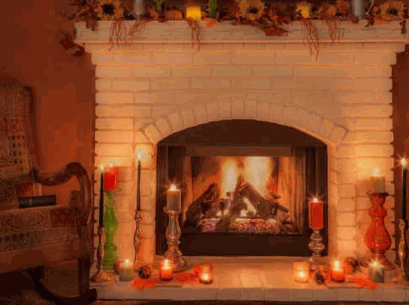
Contents
Ready to clean your fireplace brick? You'll need the right materials for a successful job. Here's a guide:

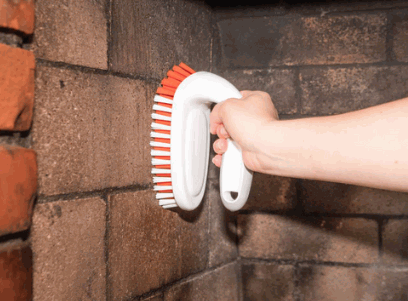
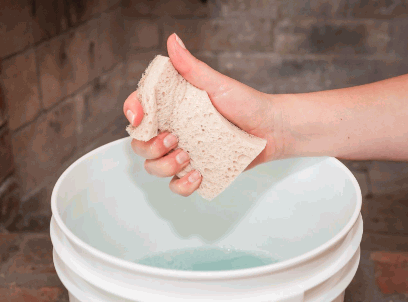
Also, read the instructions on the cleaning product before using it. Baking soda is a natural alternative to commercial cleaners that won't damage delicate surfaces.
Delve into: Best Way To Clean Laminate Floors
Preparing the fireplace area is an essential step in the process of cleaning fireplace brick. This involves taking necessary precautions to ensure the surrounding space is ready for the cleaning process. By following these steps, you can prepare the fireplace area effectively:
By following these steps, you can ensure a well-prepared fireplace area, ready for the cleaning process to begin. Remember to always prioritize safety and take necessary precautions to protect yourself and your surroundings throughout the cleaning process.
In addition, it is important to note that fireplace maintenance should be performed regularly to prevent the build-up of soot and debris, ensuring the longevity and efficiency of your fireplace.
Who needs a moat when you can protect your living room from the fiery depths with some good old-fashioned plastic sheeting?
Cover the floor with flame-resistant materials like rugs or tiles. Place a non-combustible barrier around the fireplace to avoid sparks hitting flammable objects. Ensure furniture and materials stay away from the fireplace. Consider using glass screens or doors to contain embers.
Ventilation is also key to avoiding smoke build-up. Seal any gaps or cracks in walls near the fireplace to prevent heat and embers from escaping. Safety should be your priority when dealing with fireplaces.
The Great Fire of London in 1666 serves as a reminder of how devastating neglecting the fireplace area can be. It started in a bakery near Pudding Lane and quickly spread, destroying over 13,000 houses and leaving thousands homeless. This event highlights the importance of protecting the surrounding area.
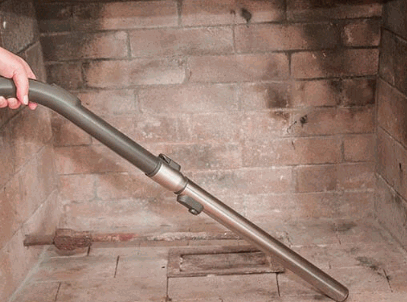
To effectively clean fireplace brick, it is important to mix the cleaning solution properly. Here is a step-by-step guide on how to do it:
It is important not to use any harsh chemicals or abrasive cleaners as they can damage the brick. In addition, avoid using excessive water as it can seep into the brick and cause damage over time.
A true fact: According to The Spruce, a reputable home improvement website, mixing a solution of one part white vinegar and one part warm water can be an effective all-natural cleaning solution for fireplace brick.
Cleaning the fireplace brick: because it's not just ashes that need to be swept under the rug.
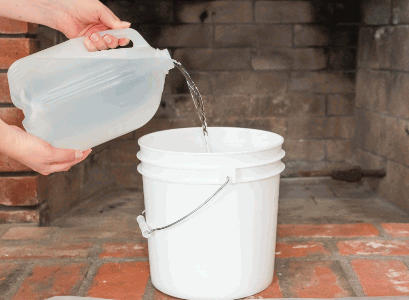
Choosing the right cleaning solution for your needs can be tricky! Let's explore the options available.
All-Purpose Cleaner: A great choice for different surfaces. Effectively removes various types of dirt and stains.
Disinfectant: Kills germs and bacteria. Commonly used in kitchens and bathrooms.
Glass Cleaner: Cleans glass surfaces without leaving streaks. Leaves a shiny finish.
Carpet Cleaner: Removes deep-seated dirt and stains. Prolongs the life of carpets.
Unique Options: Eco-friendly solutions, specialty cleaners for odor elimination or stain removal.
History of Cleaning Solutions: Ancient civilizations used natural ingredients like vinegar, lemon juice, and baking soda. Over time, chemical advancements created more effective solutions.
Gather all ingredients. These include (list of ingredients). Measure out the correct quantities for each. To get the power you want, accuracy is essential.
Next, mix them in a suitable container. Make sure they blend together well. When ready, move to a spray bottle or other storage container for application.
Be cautious when making the cleaning solution. Use quality ingredients and handle them with care. Experts suggest using distilled water instead of tap water. This has fewer impurities that could affect performance.
Applying the cleaning solution can effectively remove dirt and grime from fireplace bricks. Follow these simple steps to achieve desirable results:
After applying the cleaning solution, you may notice a significant improvement in the appearance of the fireplace bricks. With regular maintenance, you can keep your fireplace looking clean and inviting. Don't miss out on the chance to enjoy a beautiful fireplace by neglecting its upkeep. Follow these steps and bring the warmth and beauty back into your home.
Spice up your cleaning routine and make your fireplace brick sparkle, because a dirty hearth is a surefire way to extinguish any chance of cozy fireside chats.
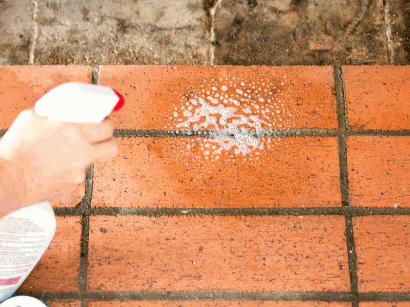
Turns out, fireplaces aren't the only things that can handle a dirty burn—grab a cloth, and some water, and let's show those soot-stained bricks who's the real boss.
Plus, use clean water - no chemicals! Don't use abrasive materials though, as they can scratch the brick.
Pro Tip: Use a mild detergent to enhance the cleaning and be gentle on the bricks.
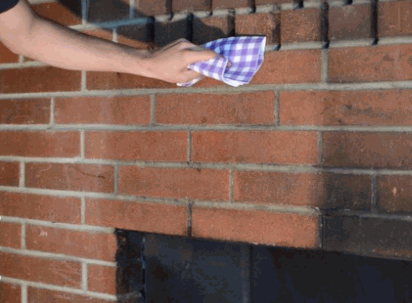
Cleaning bricks is important. To remove all cleaning solutions, follow these steps:
Remember, take your time, and be thorough. Test any cleaning products on a small area first. Don't use high-pressure washers on old bricks.
Drying the bricks is an essential step in the process of cleaning fireplace brick. To ensure proper drying, follow these steps:
When drying the bricks, it's important to avoid using heat sources like hair dryers or heaters, as this can cause the bricks to dry too quickly and potentially crack or break.
It's worth noting that the drying time may vary depending on the level of moisture and the surrounding environment. It's always best to allow sufficient time for the bricks to dry thoroughly before proceeding.
Letting the bricks air dry is like giving them a spa day, minus the cucumber slices and soothing music. It's more like a sweaty workout for the bricks, but hey, they'll appreciate the fresh air!
For ideal brick drying, air drying is essential. This permits the natural evaporating of wetness, ensuring bricks reach the desired dryness before use for construction or other. Here is a 4-step guide:
Moreover, keep the drying bricks from rain or humidity as this hinders the drying process and causes quality issues.
Since ancient times, air drying has been used to prepare bricks. Evidence of sun-dried clay bricks dates back thousands of years to civilizations like Mesopotamia and Egypt. This method has passed the test of time and remains an effective way to prepare bricks while taking advantage of nature's power.
Towels or fans can help dry bricks faster. Here's a step-by-step guide to make the most of it:
| 1. Check the bricks: | Make sure they are clean and not too wet. |
| 2. Place towels: | Put clean, absorbent towels on a flat surface. Stack the bricks on top, with some space between them. |
| 3. Pat dry: | Use extra towels to remove any moisture from the bricks. |
| 4. Set up fans: | Put one or more fans near the area. Turn them on to create airflow. |
| 5. Rotate the bricks: | To ensure uniform drying, rotate and reposition them occasionally. |
Unique details:
Final touches are the finishing steps that bring the cleaning process of fireplace brick to completion. These steps enhance the overall appearance and ensure a polished look.
To add a unique detail, it's worth mentioning that final touches can include the rearrangement of any decorative elements or accessories surrounding the fireplace to further enhance its aesthetic appeal.
True history shares that final touches have been incorporated into the cleaning process of fireplace bricks for years. Professionals have always emphasized the importance of these last steps to ensure a clean and visually pleasing result.
If there are still stains on your fireplace brick after cleaning, congrats, you've just earned yourself a modern art piece called 'Soot Splatter Chic'.
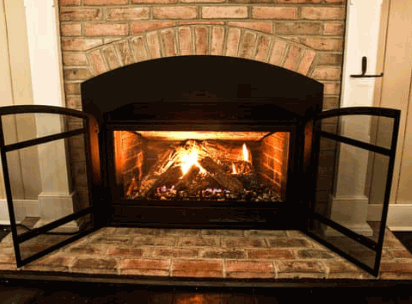
As we finish the cleaning, it is important to make sure there are no stains left. Here's a guide for checking:
Be patient and take your time examining every spot. Don't rush or you may miss something.
Pro Tip: If there are tough stains, consider getting professional help. They have the tools and knowledge to remove them.
When it comes to replacing damaged bricks in a structure, following the right steps is key. It'll help maintain the building's integrity and look. Here's a 6-step guide for successful replacement:
Attention to detail is crucial. Take your time and handle each step precisely. Weather conditions can affect results. Consult local experts or resources for recommendations.
Now, here's an interesting fact: Bricklaying began over 6,000 years ago in Ancient Mesopotamia! So, replacing damaged bricks is essential. Follow these steps to ensure the building's longevity and beauty for years!
Time and effort are key to wrapping up fireplace brick cleaning. After following the steps in this article, the beauty of your fireplace will be restored and its life prolonged.
Different types of bricks call for various cleaning methods. Painted bricks must be steered away from acidic cleaning solutions since they can harm the paint. Instead, use a mild soap and water mixture or a brick cleaner suggested by professionals.
A sealant can be applied after cleaning. It safeguards the bricks from future staining and makes them simpler to clean. Make sure to pick a sealant specifically designed for masonry surfaces and follow the manufacturer's instructions for application.
Don't forget about regular maintenance. To preserve the bricks' look, remove any loose debris or soot buildup using a soft brush or vacuum cleaner attachment. This will stop dirt from settling into the porous surface of the bricks.